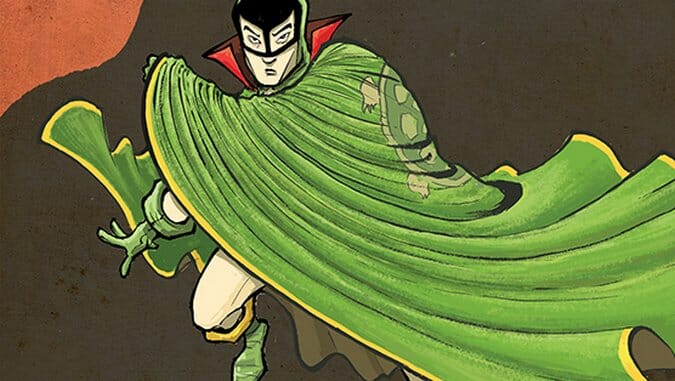The Shadow Hero by Gene Luen Yang and Sonny Liew

Writer: Gene Luen Yang
Artist: Sonny Liew
Publisher: First Second
Release Date: July 15, 2014
A reimagining of a forgotten 1940s superhero, The Shadow Hero is part of Gene Luen Yang’s larger project to bring concerns of Asian identity to the comics discussion table. From his break-out graphic novel American Born Chinese, an autobiographical work that focuses on the difficulties of assimilating into mainstream white American culture, to last year’s stellar Boxers & Saints, a two-volume work about the late 19th-century Boxer Rebellion in China, Yang has turned his eye to questions of what makes us who we are. Even slighter works, like 2011’s Level Up, about a young man torn between his love of video games and his parents’ goals for him to be a gastroenterologist, follow similar themes. Yes, The Shadow Hero is a reboot and an attempt for Yang to do something somewhat new, but it’s also very clearly part of a pattern.
The writer discusses his inspiration in the afterword, an obscure character called the Green Turtle, created by an Asian American cartoonist named Chu Hing in 1944. The Green Turtle fought primarily against the Japanese Axis forces during World War II, then disappeared. Yang talks about how Hing wanted to make the character Chinese, but his publisher vetoed the idea, so the cartoonist pursued his goal through subtler means. In the original comic, the Green Turtle’s maskless face is always obscured, and Chinese elements appear in his costume and in the background. The Shadow Hero reprints one of these comics at the end, and although it’s not great work, it’s certainly interesting as a piece of history and a jumping-off point.
Yang fills in the character’s background considerably, presenting The Shadow Hero as an origin story of the Green Turtle. This time around, he’s a Chinese American young man known as Hank, whose parents own a grocery store in California. Inspired by the example of other superheroes (real, not fictional, in this universe) and pushed into action by the detriment of criminal organizations on his neighborhood and immediate family, he develops his own superpower (invulnerability to bullets) and sets out to fight evildoers. His decision to don a cape is not a quick process. In fact, his tigerish mother is the one who spawns the idea, crafts his costume, and pushes him into the field; she embodies a stereotype that feels more like self-amused commentary than laziness.


